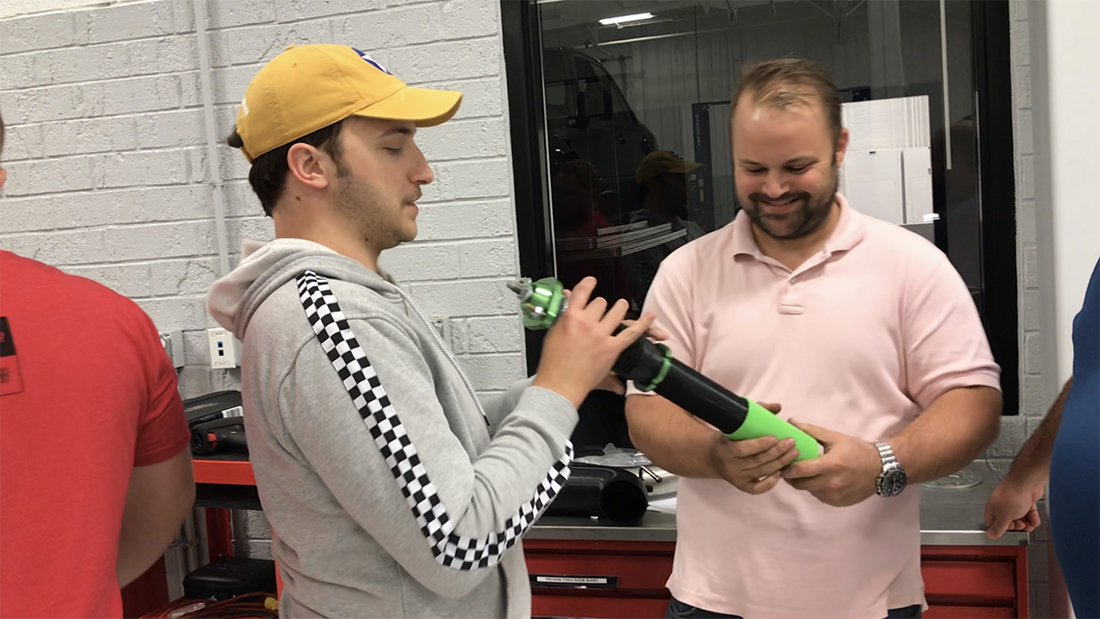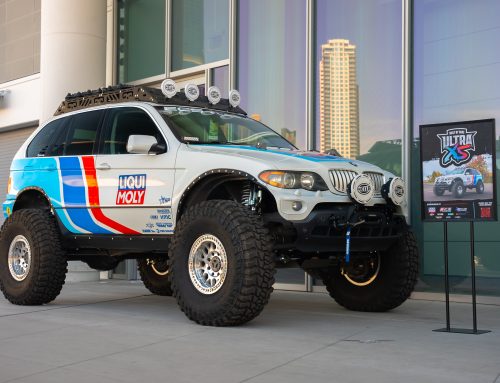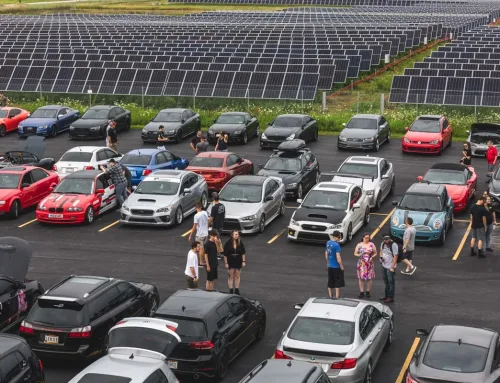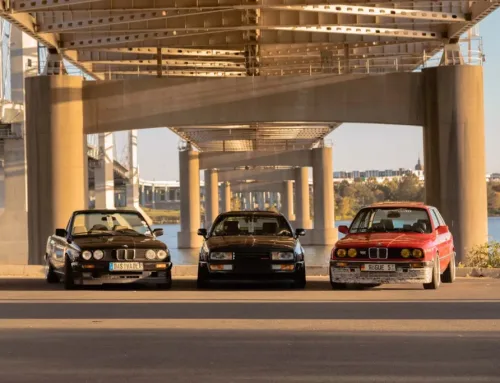I have always enjoyed building, creating, assembling, or otherwise challenging myself with projects. I relish the times I have overheard family members doubt my resolve or abilities as opportunities to both prove them wrong and realize a desire. As car enthusiasts, many of us likely can trace our interest in performing our own work and the sense of accomplishment that follows to those childhood experiences like finishing your first lego kit or model that becomes a physical representation of your creativity and interest. The reward is equally the finished product and the act of completion itself. This self-motivation, a need to be independently sustainable, isn’t even a distinctly human characteristic but one shared by all organisms. Sustainability through one’s own efforts and knowledge has been made increasingly easy with the introduction of new technology. Surprisingly enough, though, the culture around cars that have traditionally incorporated that sense of ownership, self-sufficiency, and independence has rapidly declined in the last thirty years. Are Millennials responsible for this steady drop in do-it-yourself pride and enthusiast car ownership?
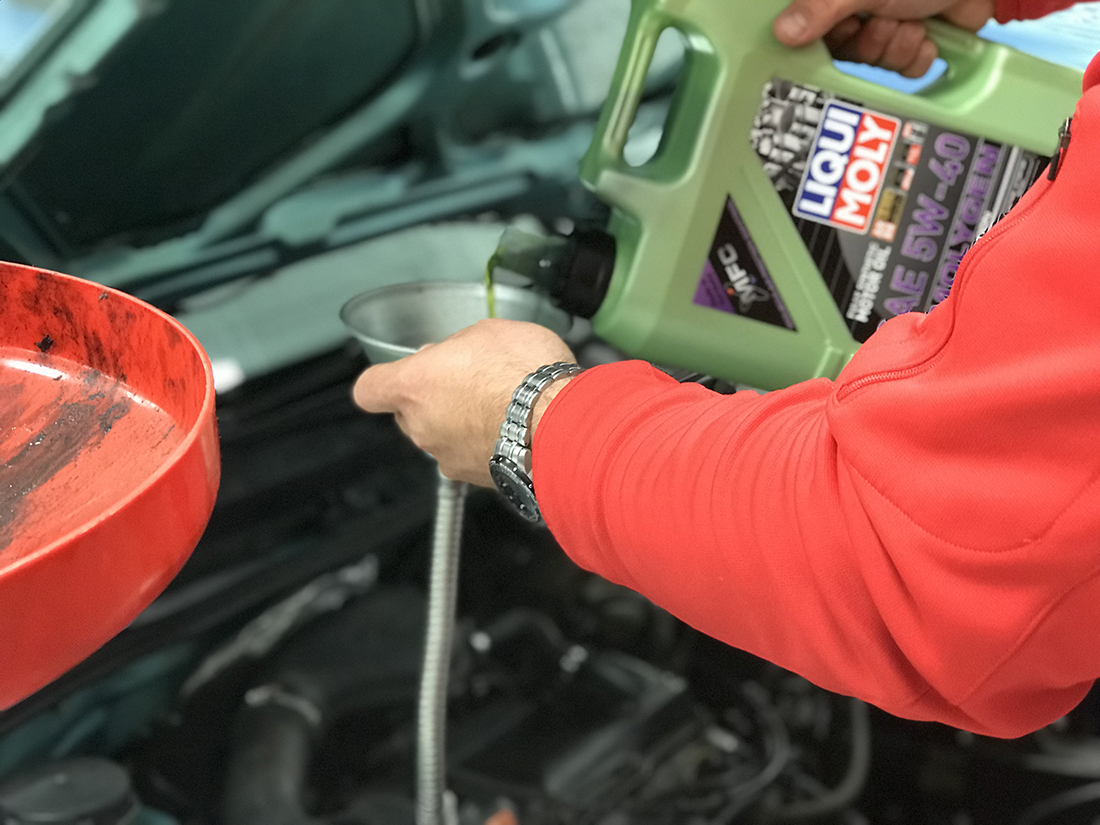
Recently, I have read a number of articles and seen some videos that outlined Millennial automotive trends showing how the largest population segment chooses to handle their transportation needs. Previously, Baby Boomers were the majority of our national population. Famous for white sneakers, jean shorts, tucked in Polo shirts, and ‘hi hungry, I’m Dad,’ the Boomers were also responsible for what we can call modern car culture. They had incredible buying power as a generation, experienced possibly the best economy America will ever see and came from a culture that glorified the renaissance man. The ability to maintain your own cars, lawnmowers, appliances, and homes were held in high regard, as was the possession of those things.
Today, it seems most Millennials prefer watching other people restore, maintain, or modify their cars to actively taking on those projects themselves. Channels like Restore It, B is for Build, and Roadkill garners millions of views, mostly aged 25 to 35. However, the number of Millennials with their own projects are falling. Not just in terms of enthusiasts, either. Millennials, in general, aren’t buying cars or even driving as much as their parents. A study in Michigan found that in 1983, just after the first Millennials turned three, over 50% of 16-year-olds in the state had their driver’s license. The same study found that in 2015, roughly 24% of 16-year-olds had their license. A 50% drop in new drivers in thirty years is astounding. The study does not explore contributing factors, but we can make some speculations.

Millennials, it seems, are less enthusiastic about cars in general. Whether it is the cost of ownership, the perceived need for personal transportation or just disinterest in the idea of a car is irrelevant. The outcome is fewer Millennials are buying cars, driving cars, or working on their own cars. It’s no secret that the car community feels like it has been shrinking. Having been heavily involved in the East Coast car community for a number of years now, it seems to be the same people hanging around and fewer newcomers each season. Car culture isn’t lost to this generation, but it doesn’t have the dominant part as a defining aspect of adulthood that it once did with the Boomers and their hot rod generation.
Millennials had the shot of nitrous we needed with the original Fast and Furious movies, which did reinvigorate the progressive car scene for a short while, but the last ten years have been quite polarized when it comes to cars. There are very few ‘affordable’ performance cars available: the M235i, Audi S3, Nissan 370z, Volkswagen Golf R, Subaru WRX and STi, BRZ/GT86, and Miata are about your only choices inside of $40k, which is the average income for Millennials. Those examples are also not exactly designed with a DIYer in mind. As an owner of the latest generation WRX, I can confirm personally that despite all its conveniences, the amount of tech, safety features, and precisely engineered spacial occupation of each component make even routine services incredibly difficult when compared to even just fifteen years prior. My M52 swapped E30, despite all its backyard built character is still just as simple to work on as it was when it was a stock M20. Arguably, it is easier with the OBD2 diagnostic capabilities included with the swap, which allow me to troubleshoot the car without even paying attention. Plug up a computer, find the issue, replace the part with ample space to do so with some simple hand tools, and it’s back on the road.

So the difficulty may play a part in people shying away from DIYs, which is evident in electronics where components have become nearly microscopic and more complex than the average space program’s full mission control just twenty-five years ago. I don’t think that is entirely it, however. This has been a gradual change over multiple decades: a slow shift away from the idea of a car as a symbol of independence into that of a dependent. Cars today are dependent on what Millennials arguably view as a waning industry. Oil is on its way out, and this has played a part in the buying trends lately.
Millennials that do say they want cars are gravitating heavily towards green alternatives like hybrids and electric vehicles rather than performance cars. Dedicated performance cars, even, are becoming blurred in their segment as technology allows the same kind of performance from your basic Camry that was left exclusively to high-end cars only a decade before. With that expectation and no attachment to the nostalgic and emotional factors we associate with certain old cars, Millennials have no reason to choose performance cars. This hinders their ability to truly appreciate their car as special or representative of anything since modern cars are all just shy of being rebadged versions of the same thing by different brands. Gone are the days of quirky cars that overflow with character and evoke emotional responses from their drivers. We are lost now in a sea of amorphous crossovers as the market has demanded all cars do all things every individual car used to do in a single functional appliance.
Much like phones transformed from exclusively long-distance communication to a handheld computer/game console/phone/FBI spying device, cars have taken on a new identity in the 21st century. Buyers (Millennials) want something with space for their friends, dogs, and luggage. They want something that appears ‘young and sporty’ but is still practical on gas mileage, is easy to drive and doesn’t make them think too much behind the wheel. The act of driving is no longer seen as all your car needs to do. This isn’t a new observation, but one that is now so blatantly in-your-face I have to mention it. Cars are more like appliances than ever. As they have continued to represent the market, it seems people are less interested in driving and more interested in having a car that is as far away from any semblance of activity as possible. Blind spot monitors, rear cross traffic alert, adaptive cruise control, lane assist, cameras, sensors, and technology take the place of human ability behind the wheel. The desire for technology to do most of the work for us has become a theme around our cars.

So Millennials are essentially creating their own car culture, or anti-culture, in their buying habits that drive the market. Crossovers are king now, which means these uninteresting blobs will only become more prevalent as sedans, large trucks, SUVs, and mid-level performance cars slowly fade away. With a uniform type of car on the road, it is hard to feel pride when your Mercedes blob looks just like the Toyota blobs and the Honda blobs on either side of you. Especially when their technology, performance, capabilities, and dimensions are all roughly the same. So what are you even buying now? A brand?
As I mentioned before, that trend towards a single type of car is only a part of the problem. The biggest component of which is Millennial’s choices to not even buy cars. High student loan debts, relatively low wages, a shortage of salary positions out of college, and high costs of living have most Millennials preferring to avoid car ownership altogether. The average Millennial would rather lease something nicer than purchase, which makes their dollar go farther in that case, or use a form of transportation like ridesharing, public transit, or ride a bike. They tend to live in urban areas, so walking, Ubering, or jumping on a subway are just as practical as owning a car without the needs for maintenance, parking, or monthly payments.
This begs the question: are Millennials causing a decline in car culture, or did the economy left by the generation perhaps responsible for car culture steer this generation’s decision making? How did children raised by parents who were inclined to appreciate their possessions to the point of learning basic mechanical skills to maintain them end up wanting to avoid those past times? For me, knowing how to maintain my cars is a major part of what allows me to afford them. If I had to take my WRX into the dealership for the services I have completed since my original purchase, my cost of ownership would be nearly double. If I had a shop build my BMW to what it is now, I can’t imagine what the cost would be. Needless to say, my attitude of putting in a little extra effort has afforded me the ability to own things that would otherwise be prohibitively expensive. Apparently, though, I am an outlier when compared to the rest of my generation.

It seems, then, that the problem is broken down into stages. The inception of our current car culture decline began with the buying habits of our parent’s generations. Their pursuit of convenience technology meant that most Millennials grew up without a need to learn mechanical skills or find appreciation in Saturdays spent in the garage with a family member building something. The technology introduced by our parents replaced our need for those skills and dominated our interests while transportation became less of a goal and now exists as more of a ‘by need’ basis. Instant information only needed once, or at that particular time. Why learn something when you can use Google to get the answer you need?
The second stage is clearly economic. Rising inflation, living costs, tuition, and more competition for career positions mean that the buying power of your average Millennial is considerably less than their parent’s generation. So the cars that are available to most Millennials are not ones that inspire enthusiasm, they are purely purchased to fill a need. Practicality, affordability, reliability, and convenience are the most important characteristics of a Millennial’s ideal car.
Lastly, the car industry itself plays a leading role in this culture shift. While they do respond directly to what the market demands, these companies are now so far removed from their enthusiast roots that the executive priorities have transitioned away from mold-breaking and into conservative design choices. Cars have been around long enough that people know what they want. Rather than create something inspiring, with the exception of Tesla, supercar manufacturers, and rare instances like BMW M-GmbH, AMG, and STi, car companies are focused on hitting the widest possible market with each model.

We are left with the remnants of a once defining part of American culture as the number of enthusiasts looking for something more than just a means of transportation steadily shrinks. With the first generation of people less likely to possess ‘trade’ skills than ever, we stand to lose so much old-school wrenching techniques in the collective common knowledge. So now, more than ever, it is important to carry the torch for future generations to experience cars as a source of excitement and emotional satisfaction. I encourage you to preserve a part of that culture by becoming a vessel for it yourself: take on that involved maintenance project in your garage, learn a new skill, buy a piece of equipment you’ve always wanted but never mastered. With a little effort, you can be the enthusiast that inspires your children or even a neighbor’s child who sees you wrenching away on your Saturday afternoon. There is something so curious about someone under their car, probably because of its scarcity today, that leaves a lasting impression on those who observe your work. Get your tools out, grab an Assembled by ECS service kit, and take care of your next service at home as a statement that car culture and self-sufficiency will remain a staple in American life.

